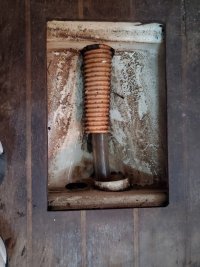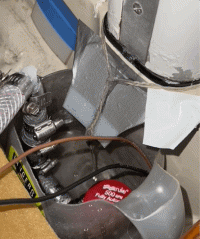So, comparing my aft-most bilge compartment with Roger's, his has an extra hole for a 3/4" pipe leading aft (and is WAY cleaner - look at that!).


As part of my upcoming 'Bilge Pump 3.0' project, I thought relocating the auto pump egress to the transom and mounting the pump under the quarter berth might be a better option. I could still use my wiring for a water witch in the forward compartment (where I will have the strum). If I were to add a hole to the TAFG here, is a standard circular hole saw the best choice? Or maybe a forstner bit? Will I have two layers to drill through on the TAFG to duplicate the hole the 1 1/2" pipe takes?
I've read a few threads here that say drilling through the TAFG isn't a big deal. Any other general tips from someone who's drilled like this before?


As part of my upcoming 'Bilge Pump 3.0' project, I thought relocating the auto pump egress to the transom and mounting the pump under the quarter berth might be a better option. I could still use my wiring for a water witch in the forward compartment (where I will have the strum). If I were to add a hole to the TAFG here, is a standard circular hole saw the best choice? Or maybe a forstner bit? Will I have two layers to drill through on the TAFG to duplicate the hole the 1 1/2" pipe takes?
I've read a few threads here that say drilling through the TAFG isn't a big deal. Any other general tips from someone who's drilled like this before?


